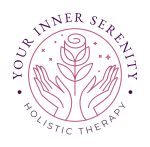Why CST
Craniosacral Therapy can help with both new and long-standing health issues, easing physical aches and pains anywhere in the body, whether you know the cause or not. People have found it beneficial for things like:
What is CST
Craniosacral Therapy (CST) is a very gentle, hands-on therapy that helps the body heal and feel better. Developed from osteopathy in the early 1900s, CST uses light touch to work on the craniosacral system, which includes the brain, spine, and the area around the lower back.
During a CST session, a therapist lightly touches your head, neck, and back to help your body relax and release tension. This gentle touch can improve the flow of cerebrospinal fluid, which surrounds your brain and spinal cord, helping to ease pain and support overall health.
One unique aspect of CST is that it’s not just about relieving physical symptoms. It also helps you feel better emotionally and mentally by promoting a state of deep relaxation and balance. Even babies and young children can benefit from CST, as it’s very gentle and nurturing.
People use CST for various reasons, including stress, chronic pain, sleep issues, and even emotional trauma. It supports the immune system and helps the body’s natural ability to heal itself. Many find it especially helpful during challenging times or alongside other medical treatments.
Overall, CST is about helping your body find its own way to better health by freeing up blockages and restrictions that might be holding you back. It’s a calming, supportive therapy that listens to your body’s needs and helps it heal naturally.
What to expect during a session
During a typical CST session, after discussing symptoms, the patient lies clothed on a couch or can choose another position, such as sitting or lying on the floor. The session begins with creating a safe space for the body to settle. The therapist may start at a spot they or the patient find appropriate. Initially, patients may feel relaxed or experience tingling and warmth, with deeper benefits emerging later. The practitioner facilitates the patient’s self-healing at a natural pace, guided by what they sense. For example, treating chronic headaches might involve addressing issues in the legs due to interconnected body structures, demonstrating a holistic approach rather than focusing on isolated parts.




